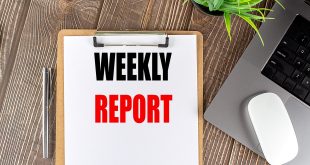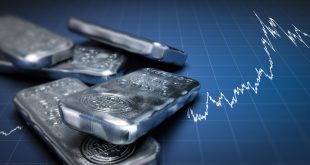Central banks, categorized as most observed and most monitored around the globe, are coining what can be called a campaign against surging inflation. But this week it became more obvious that they know this could be achieved only at a cost that their economies should endure.
US president Joe Biden indicated, on Friday, what was reiterated by Treasury Secretary Janet Yellen, on Sunday and Both Biden and Yellen see that a recession is not “at all inevitable” as the Fed takes increasingly aggressive action to address sharp inflation,
Key inflation reading showed some hope on Tuesday, revealing a slight slowdown in rising prices — though they remain uncomfortably high. The Producer Price Index, in the US, rose 10.8% in May compared to where it stood a year ago, according to data released Tuesday by the Bureau of Labour Statistics. While that reading was down from the revised 10.9% rise reported in April’s reading, it is still high by historical standards. The PPI had not recorded a double-digit increase in data going back to 2009 until this past December. While the PPI measures wholesale prices, not retail prices paid by consumers, they have an eventual effect both on consumers and the overall economy.
On Tuesday. Germany published May inflation data, Germany’s economy, Europe’s largest, is likely to grow weaker than expected this year due to the consequences of the war in Ukraine, the Ifo institute said on Wednesday. The institute cut its 2022 forecast for German growth to 2.5%, from 3.1% predicted in March, while revising its inflation forecast to 6.8%, up from an earlier 5.1%. In the beginning of 2022, high prices led to a loss of purchasing power among private households and in turn to a decline in goods consumption.
Monetary Policies, Rate Policies Globally
From the UK, where the Bank of England raised interest rates for the fifth time in as many meetings, to Switzerland, which has decided the country’s first interest rate hike since 2007. Monetary policymakers in almost every major economy are turning off the stimulus tap, adopt quantitative tightening and all are startled by inflation that many, at the very beginning, dismissed as transitory fleeting.
On Wednesday, the Bank of England raised its benchmark interest rate by 75 basis points, the largest increase in nearly 30 years. Fed Chair Jerome Powell also hinted at more aggressive tightening ahead as policymakers steer up their fight against inflation.
Above all, the US Fed this week dramatically scaled up its response. It has been raising rates since March, but on Wednesday, Fed decided its first 0.75 percentage point rate hike since 1994. US policymakers also set the scene for even a tighter monetary policy in. Officials project rates to rise to 3.8 per cent in 2023, with most of the increases slated for this year. They now hover between 1.50 per cent and 1.75 per cent.
The Fed knows this might bring about some undesired side effects. Just last month, the FOMC said it thought that as it tightens monetary policy, inflation will fall back to its 2 per cent target and the labour market will “remain strong.” This time around, it cleaned that line on jobs, affirming instead its commitment to succeeding on the inflation front.
While the Fed’s unprecedented action, on Wednesday reiterated its commitment to normalizing price levels, investors and economists fear this also increased the risk its inflation-fighting measures may dip the economy into a perceived recession.
Equities
Though world’s major stock indexes fell this month, Chinese shares have jumped. China’s stock rally has become a lifeline for Asian portfolios and China’s lifting lockdowns will help the region greatly. Asia investors have been given hope that regional equities will get a push upwards in the second half of 2022.
China stocks will likely help Asia outperform given that China’s stimulus effect will be more noticeable in the second half. Economically, Asia is more dependent on China than the rest of the world.
Equities in China and Hong Kong account for about a quarter of the MSCI Asia Pacific Index, which has outperformed an index of global stocks by almost five percentage points over the past month. Meanwhile, China’s CSI 300 Index has jumped 7.6% in the same period, rebounding from sharp losses earlier this year.
Even with Covid waves, the majority of analysts still expect China’s economy to grow more than 4% this year, versus 2.6% for the US, which will offer tailwinds to Asia where most countries list China as their largest trade partner.
Asia can’t be completely immune to a slowdown in the world’s largest economy. Goldman Sachs Group Inc. strategists said positive returns for Asia may be difficult if the US equity market remains under pressure, while adding that “the case of Asian outperformance remains strong”.
On Wall Street, the Fed’s move triggered a wave of recession calls and sent markets into confusion. For the week, the Dow and Nasdaq declined 4.8%, while the S&P 500 contracted 5.8%. Declines were led by growth stocks and procyclical stocks, mainly in the technology sector and travel industry.
Currencies
Starting Monday, June 13, risk aversion dominated financial markets at the beginning of the week, spurring the dollar’s demand and sending EUR/USD to 1.0414, its lowest since mid-May. The disappointing market sentiment was an echo of news that US inflation reached another record high in May. Even before the US Fed’s decision, traders increased bets on an aggressive quantitative tightening, and there were market talks about a potential 75 bps hike.
On Friday, June 17, The Japanese yen fell 1.9% after the Bank of Japan bucked a wave of monetary tightening and stuck to an ultra-low interest rate, while currency markets looked poised for another choppy session after a series of rate hikes this week.
Government Bond Yields
The yield on the 10-Year US Treasury note rose to its highest level since 2011, reaching an intraday high of 3.49% on Tuesday before closing the week at 3.23%.
For the second time this year, significant portions of the yield curve are inverted (shorter-term treasuries yield more than longer-term treasuries). These inversions are strong recession warnings although the spreads are small and the most watched 2-10 spread is still positive.
Cryptocurrencies
Singing a different tune, Dogecoin spikes 9% on Sunday after Elon Musk reaffirmed that he is buying the cryptocurrency and will “keep supporting” it. Musk’s tweet, expressing support for the token that started out as a joke, comes after a Dogecoin investor had filed a lawsuit against the billionaire seeking $258B and alleging that Musk is running a pyramid scheme. Dogecoin jumped to a peak of $0.64 in May 2021 during a broader crypto surge and during the meme stock frenzy. Musk’s tweets Recently, it’s trading at about $0.06. In May 2021, the crypto coin jumped 30% after Musk tweeted that he was working with DOGE developers to improve system transaction efficiency.
In the broader crypto market, Bitcoin is rising 2.9%, at $19.5K, Ethereum +5.0% to $1.04K, Litecoin gained +14% to $1.03, Binance coin +4.4% to $208.47, solana (SOL-USD) +8.8% to $32.38.
Liquidity problems could account for the latest crypto crash. Over the weekend, bitcoin price dropped below a key psychological level for buyer support, and so far, has not managed to return above that level.
Bitcoin price fell below $20,000 on Saturday and is currently trading at $19,379 on Sunday morning, registering a 29.36% loss over the previous week. Bitcoin also retreated below $18,000 on Saturday afternoon, but the price so far has rallied 1.18% over the past 24 hours.
Commodities
Gold is striving. Most precious metals retreated on Friday, cementing weekly losses despite a couple of days of gains. Daily losses were the first in three for gold, silver and platinum and the first in four for palladium.
Gold for August delivery shed $9.30, or 0.5%, to settle at $1,840.60 an ounce on the Comex division of the New York Mercantile Exchange.
Thursday witnessed weaker US dollar as the American trading session close approached, safe-haven demand and US dollar buyers were taking profits and this weakened the USD and lifted gold prices, with the Gold Index trading at $1854.60, gaining 1.14%.
On Monday, June, 13, West Texas Intermediate traded as high as $123.66 a barrel before retreating. On Friday, Oil prices tumbled about 6% to a four-week low on Friday on worries that interest rate hikes by major central banks could slow the global economy and cut demand for energy.
Also pressuring prices, the U.S. dollar this week rose to its highest level since December 2002 against a basket of currencies, making oil more expensive for buyers using other currencies.
Brent futures fell $6.69, or 5.6%, to settle at $113.12 a barrel, while U.S. West Texas Intermediate (WTI) crude fell $8.03, or 6.8%, to settle at $109.56, recording first weekly decline since April, as concerns over a global growth slowdown led to reduced demand for fuel. West Texas Intermediate (WTI) crude closed the week at $109 per barrel.
The Week Ahead
Next week will be a shortened trading week as markets close, marking the Juneteenth holiday for the first time in the US on Monday. Fed Chair Jerome Powell will testify in a two-day semiannual testimony on monetary policy before Congress on Wednesday and Thursday.
Significant updates are expected on the US housing market, including new and existing home sales tracking the month of May.
International updates on key economic indicators are also expected, with inflation updates for the Japan and the UK.
In addition, markets await the consumer confidence readings for the Britain and the Eurozone. A number of firms including Accenture, FedEx, Darden Restaurants, Rite Aid, and CarMax, among others, will be reporting earnings for the quarter ended in May.
The June flash estimate of S&P Global’s Composite PMI Survey, along with the final reading of the University of Michigan’s Consumer Sentiment Index (MSCI), will be released on Thursday and Friday.
 Noor Trends News, Technical Analysis, Educational Tools and Recommendations
Noor Trends News, Technical Analysis, Educational Tools and Recommendations





